
Origins
Blythburgh is a small village in 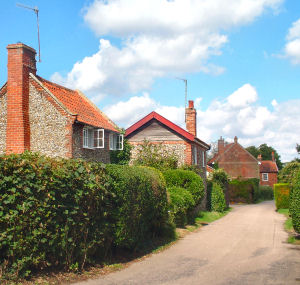
The surrounding landscape is rich in archaeological sites dating from Neolithic to Roman times. Blythburgh itself is an Anglo-Saxon foundation. Christianity came to Suffolk early in the seventh century and Blythburgh was one of its most important centres. Indeed, it may have been the location of the Anglian Episcopal seat generally assumed to be at Dunwich. By 654 Blythburgh had a church to which, according to tradition, the bodies of the Anglian King Anna and his son Jurmin were brought after they fell at Bulcamp in battle with the Mercian Penda. The church could have been one of King Ælfwald's Minsters (he died in 749). The finding of an eighth-century writing tablet in Blythburgh suggests a literate Christian presence at that time. Certainly Blythburgh was for centuries the local centre of authority. Major criminals were punished there and, for all the commercial importance of Dunwich, its merchants had to go to Blythburgh to change money.
At the time of the Norman Conquest in 1066 Blythburgh was part of the royal estate. It was one of Suffolk's twelve market towns, and its church was especially rich, worth ten times the average for Suffolk, one of the richest counties in England. There were two unendowed daughter churches. Blythburgh must have had considerable wealth and influence.
Around 1120 Henry I granted
Blythburgh church to the Augustinian canons of St Osyth's Priory in Essex.
This was presumably the 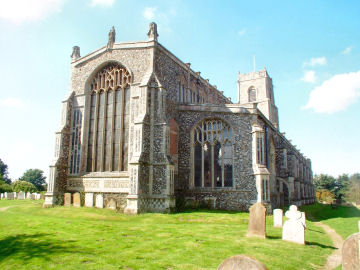
The start
of decline
Blythburgh, located within a rich agricultural area and on an important road at
the lowest crossing on the river Blyth, no doubt continued to prosper through the
twelfth and thirteenth centuries into the beginning of the fourteenth. Whether
Blythburgh was ever a significant port is doubtful. It is easy to confuse such
activity at nearby Walberswick (in the same manor and closer to the sea) with Blythburgh
itself. Even Walberswick had to reach agreement with its powerful neighbour Dunwich,
in its heyday in command of the mouth of the river, before it could fish and trade
with its own ships. In any case sea-going vessels of any size would probably have
been unsuited to the narrow twisting channel leading upstream to Blythburgh.
Nevertheless, in 1327 the community was the 21st richest in Suffolk, ranked below Beccles and Dunwich locally, but above Lowestoft, Southwold, and Halesworth. The Black Death, which reached East Anglia in 1349, was a turning point. The impact of the loss of population and the social and economic disruption that followed can be seen in the tax returns of 1449. Blythburgh, like many other Suffolk communities (but not Walberswick) was granted tax relief because it was less populous and prosperous than it had been more than one hundred years earlier. Perhaps Blythburgh suffered more than its neighbour because it was a thoroughfare town enjoying an income from passing travellers. Decay is also evident from the accounts of the Lord of the Manor, John Hopton, who succeeded in 1430 and died in 1478. Living at what is now Westwood Lodge, he had a flock of 700 sheep, took 1000 rabbits annually from his warren, and fattened bullocks. But of his annual income of about £300, only £40 came from his Suffolk estate and his tolls from the local market had dwindled to almost nothing. By 1490 there was only one stall.
Paradoxically, in this period of apparently straightened circumstances, Blythburgh church was rebuilt. The prior obtained a licence to rebuild in 1412 and by 1480 the project was complete. The great new church, which retained an existing fourteenth-century tower, does not reflect either a large or especially rich community. It is not a 'wool' church - John Hopton's flock was not particularly large and east Suffolk played only a minor role in cloth production - if anything, apart from fishing, it was butter and cheese country. Clearly, there was money around, although the slow pace of building meant that spending could be spread over many years. We don't know how much John Hopton contributed but his was Yorkshire rather than Suffolk money. The church's size, its extensive stained glass (now almost all gone) and its furnishings, reflected less the wealth of the community as a whole than the deliberately conspicuous expenditure of individuals who wished to be remembered after their deaths. They relied upon the prayers of the living to speed their souls through purgatory to salvation: their spending was, as one writer has put it, a form of post-mortem fire insurance.
Dramatic
change
The sixteenth century brought great changes. The early years may have 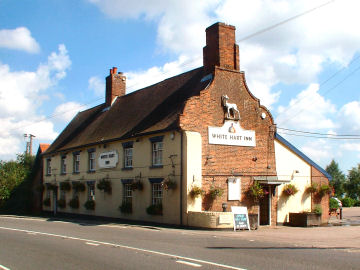
There were also dramatic changes to the parish church. With the Protestant ascendancy and royal edict came, from the late 1540s, the removal of altars and images, the whitening of walls, the smashing of glass (although much stained glass is known to have survived in Blythburgh until at least 1660), and the surrender to the King's commissioners of the accumulation of generations of pious benefactions. A powerful storm in 1577 added to the discomfiture of worshippers. During a service the church was struck by lightning, killing two people and damaging the spire.
At its suppression the priory's properties were granted to Walter Wadelond of Needham Market and in 1548 reverted to the Hopton family, being combined with the Blythburgh manor they already owned. The Hoptons' time in Blythburgh was however approaching its end. In 1592 they sold the Blythburgh, Walberswick and Westleton manors to Alderman Robert Brooke, a successful London grocer. He also bought the Hoptons' Yoxford estate with Cockfield Hall. This became the seat of his son, also Robert, from 1602. From that date Blythburgh's major landowner lived outside the parish. Westwood Lodge park was immediately let and the house followed in 1614. Later in the same century the estate passed to the Blois family (they had been Ipswich mercers and chandlers - like the Brookes founding a landed family on a sixteenth-century trading fortune) through the marriages of Sir William Blois (1626-75). His first wife was Martha Brooke, and his second Jane, widow and heiress of his brother-in-law, John Brooke.
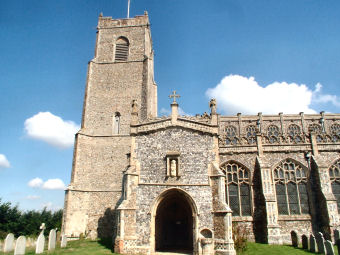
Decay
in an expanding world
Symbols of burgeoning economic development and prosperity in the eighteenth century
passed through Blythburgh rather than involved it directly. The Blyth navigation
between Southwold and Halesworth was completed in 1761. The drainage of the adjacent
marshes continued apace and grazing cattle replaced wildfowl and wader. A new turnpike
road carved its way through the centre of the village in 1785, some of the remaining
fabric of the priory being used in its foundations. The old main road that had
meandered past the church was thus bypassed, and became a quiet backwater. The
site of the old market place between the church and the new road was forgotten.
A more forbidding symbol of population increase, unemployment and grinding poverty,
was the opening in 1766 of Bulcamp House of Industry, designed to house 400 paupers
from 46 parishes and one township in the Blything Hundred. It became a feared workhouse
in the nineteenth century, with over 550 inmates in the 1820s. Even in the twentieth
century, after it had become a hospital, some old people still dreaded the thought
of going there.
Blythburgh's population rose
rapidly, peaking in 1851 at 1,118, including the workhouse. Farming in Blythburgh
had a high reputation. In 1813 Westwood Lodge was described by the agricultural
commentator Arthur Young as 'without 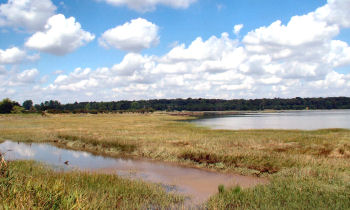
If Blythburgh's population worshipped at all, the majority were to be found at the Primitive Methodist Chapel in Dunwich Road, built in 1837. The neglected parish church continued to moulder into decay, completing the destruction of the medieval glass started by the sixteenth and seventeenth-century iconoclasts; many of the church records were burnt in the church stove. In 1881 the Bishop of Norwich deemed the fabric to be unsafe and closed the church.
The decay of Blythburgh church
is not surprising. The raison d'être for its great size and lavish display
ended in the sixteenth century with the Reformation and new attitudes to purgatory
and the saving of souls. The poor populations of the eighteenth and nineteenth
century could not afford to reverse the depredations of the iconoclasts and
years of neglect, even if they had wished to do so. The non-resident patrons
also had problems of their own. Cockfield Hall was in the hands of trustees
in the late eighteenth century while gambling debts were settled, and in the
nineteenth century the miserly eighth baronet had twelve expensive children
coupled with an agnostic attitude towards religion.
Transformation
Although Blythburgh church came close to sharing the fates of Covehithe and Walberswick
whose equally imposing structures fell into ruin and were drastically reduced to
suit their small congregations, poverty and indifference were ultimately the saviours
of Blythburgh's medieval fabric. Given leadership and money, the church would no
doubt have been heavily restored in the nineteenth century. It took a national
campaign in the 1880s to repair and reopen the church but a controversy over the
extent to which it should be restored was long and heated. A scheme drawn up by
the architect G. E. Street, favoured by the local building committee, led by the
determined incumbent, Henry Sykes, appalled the Society for the Preservation of
Ancient Buildings, founded by William Morris. Morris had many highly placed supporters,
and the ear of the patron, and argued 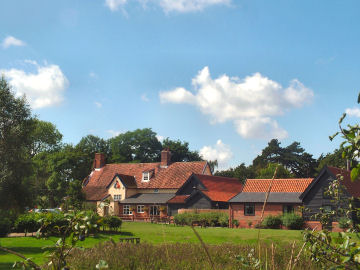
The local building committee included some prominent artists, reflecting the long established attraction of the Blyth valley to painters. The Royal Academicians Ernest Crofts and Sir John Seymour Lucas had homes in the village. They considerably altered and extended modest buildings, probably of the seventeenth-century, to create their picturesque houses 'The Green' and 'The Priory'. Thus the invasion of the area by incomers, seeking weekend or retirement homes, that became obvious in the late twentieth century, had its origins almost one hundred years earlier.
The Southwold Railway, opened in 1879, gave Blythburgh a station and a hump-backed bridge to carry the main road over its tracks. For fifty years the railway provided access to the main line at Halesworth in one direction and the sea at Southwold in the other. Blythburgh never had cause to complain about its communications. But the national rail network dealt a mortal blow to the river navigation. By the start of the twentieth century commercial traffic had ceased. And the river flooded back over the marshes downstream of Blythburgh to recreate a wildlife habitat later designated as a National Nature Reserve.
As twentieth-century society
became more mobile, and the pattern of employment 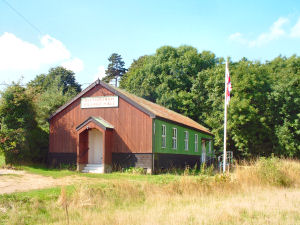
Further reading
The list of useful sources is quite long. They are given in 'Writing about Blythburgh
history. A select bibliography', no. 14 in the Blythburgh Society's series of Blyth
Valley History Notes.
Alan Mackley
Blythburgh, September 2001.
Blythburgh.net is part of the Blythweb Group of Local Sites and is owned and operated by Blythweb which is
a trading name of MHCreations
(Formerly Blythweb Ltd 1999 - 2017).
and should not be used elsewhere without prior permission.